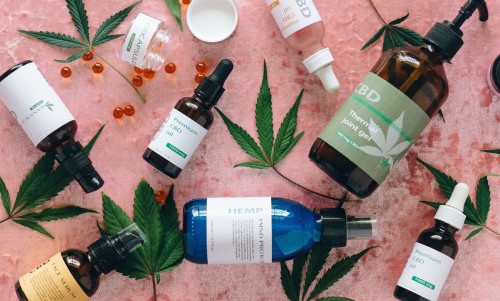WHAT ARE SAFE MARIJUANA DOSAGES? - June 10, 2020

The dosage of marijuana is a key factor in getting the most benefits and the fewest adverse effects. To do this properly, it is necessary to have a basic understanding of the essential characteristics of cannabis and how to take advantage of what it has to offer.
There are some people who can use small amounts of cannabis, while others need higher doses. For example, some adults can achieve therapeutic effects with just one milligram of cannabinoids each day, while others can consume 2,000 mg per day with no adverse effects.
UNDERSTANDING THE MULTIPHASIC DOSE-RESPONSE RELATIONSHIP
While this broad dosing range is unusual, cannabis also exhibits an unusual relationship between the dose taken and the response expected. With most medications, more milligrams are going to create stronger therapeutic effects and the increased potential for adverse results. This is referred to as the monophasic dose-response relationship. With cannabis, though, this pattern is not present.
For most people who consume cannabis, they will continually increase their dose over time. As they do this, they will begin to feel stronger effects in the beginning, but after a certain point, which is something that is unique to each person, ongoing dosage increases may result in fewer therapeutic effects, which may then be accompanied by a growth in unwanted effects.
If someone continues to increase milligrams taken to higher levels, they may be able to achieve some of the benefits lost before and find the effects that are not present with the lower dosage. However, taking extremely high doses are more costly and may wind up resulting in unwanted side effects. This is something to discuss with the professionals at the Cannabis store where a person shops to learn more.
For some cannabis users, this means less is often more. In one study conducted of 263 opioid-treated cancer patients with minimal results from pain control methods, the group that received the 21 milligrams of CBD and THC (combined) every day, experienced improvements in their total pain levels. The pain reduction was considered significant than the group receiving 52 milligrams per day. The group of individuals who received 83 milligrams every day did not achieve better pain reduction than the placebo group, but they did experience more negative side effects.
Many people wonder why this happened. The endocannabinoid system in the body is very sensitive and it is a very turned physiologic infrastructure that is uniquely designed to help maintain a sense of balance at the cellular level. If the cannabinoid receptors are overstimulated by higher doses of cannabis, then the cells will pull the receptors inside where they will be degraded or recycled. As the receptor levels begin to diminish the effects of the cannabis that are taken will also diminish, especially in cases of escalated doses. This is true when any form of cannabis is used from tinctures and supplements to edibles and more. The phenomenon that occurs is called “tolerance-building” and it is something that some regular users of cannabis have experience.
THE THERAPEUTIC WINDOW
The phrase “therapeutic window” is used to describe the range between the minimal dose that will produce results to a dose that produces intolerable or unwanted side effects. For those who have minimal experience with cannabis, they will usually have a very small therapeutic window. However, regular users will develop a bigger therapeutic window as time passes. This occurs because people build a tolerance to the effects that cannabis has at varying rates. Most will build a tolerance to the unwanted effects of this faster than they will the desired effects.
THE BIDIRECTIONAL EFFECTS OF CANNABIS
It is important to note that cannabis has the potential to produce the opposite or bidirectional effects in various people, with varied strains, and different dosages. If someone with anxiety takes cannabis they may experience relaxing benefits; however, people who are not anxious who take the same exact dose of the same exact strain may become more anxious. The same dose of different strains of cannabis may also result in the opposite effects. One of these may be an awakening strain while the other could cause someone to feel sleepy.
What is interesting is the symptoms of a cannabis overdose are very similar to what you would expect cannabis to help alleviate, including anxiety, tremors, nausea, spasms, vomiting, sweating, diarrhea, disturbed sleep, discoordination, paranoia, and panic attacks. If someone has an extreme overdose, it may lead to acute psychosis or hallucinations.
There is some good news. These symptoms are all self-limiting. In fact, most people who experience them will overcome them within just 12 to 24 hours. While an overdose may make a person feel bad, the experience does not cause any permanent damage or toxicity.
COMBINING THC AND CBD
THC and CBD have an array of overlapping qualities that provide therapeutic benefits. These include things like relief from nausea, seizures, anxiety, and pain. While this is true, they work through different methods. When they are combined, THC and CBD can help to enhance one another’s benefits and reduce the unwanted effects experienced, which include the impairing or psychoactive effects caused by THC. This is good news for a cannabis user who wants to experience the health benefits while maintaining a superior level of performance for work.
When THC and CBD are combined, the therapeutic window that is described above will become larger. As a user of these products, it is important to understand that the total amount of milligrams for cannabinoids that are used for treating a symptom or condition may have to be increased to achieve the desired effects.
FINDING THE RIGHT DOSAGE
Unfortunately, there is no magic formula a person can use to determine the proper dosage for their needs. In many cases, it is a case of trial and error to see what works best. A good rule of thumb is always to start with a lower dose and then increase it slowly until the desired results are achieved. This can also help prevent the use of too much that may cause adverse side effects.
